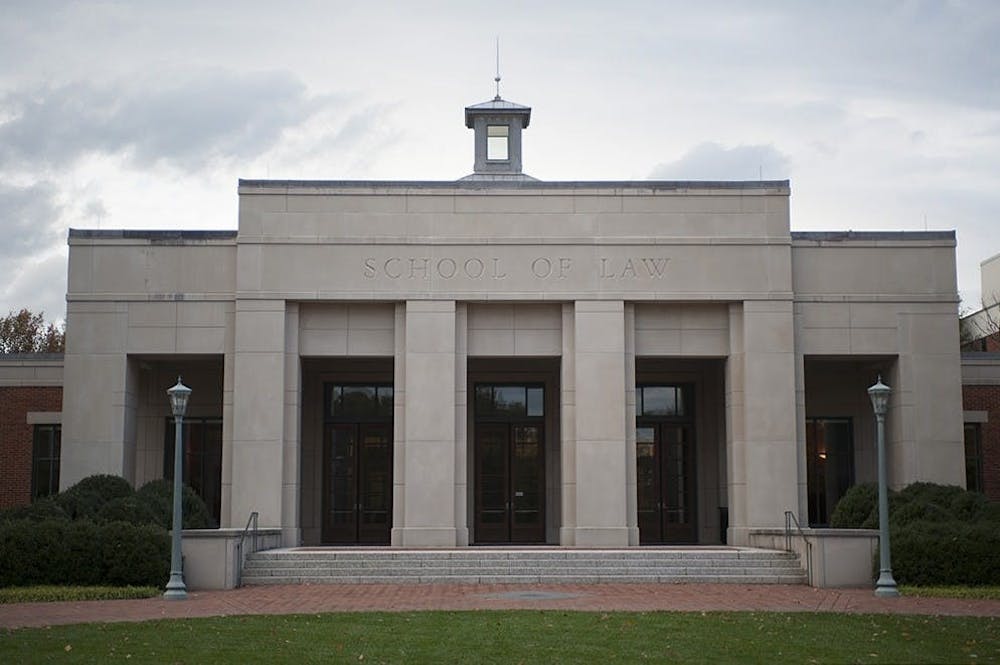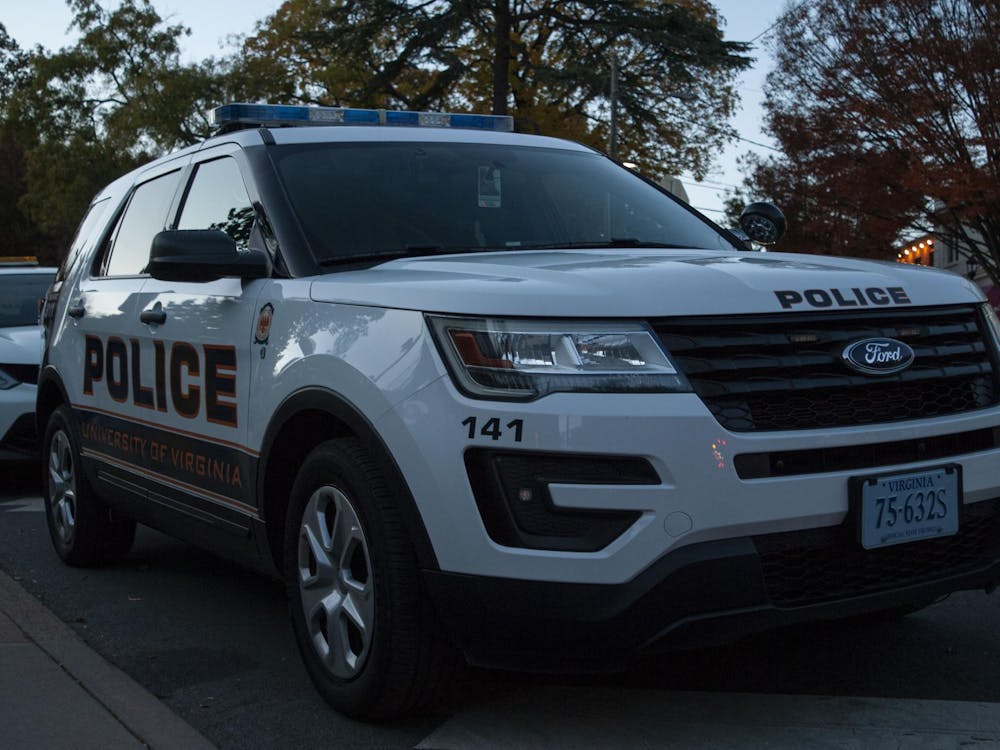The Innocence Project at the U.Va. School of Law has worked with law students, attorneys and other Innocence Projects across the U.S. since 2008 to exonerate wrongfully convicted Virginians. Since 2019, the Innocence Project at the U.Va. School of Law has also worked to enact policy changes to better protect against wrongful convictions.
The National Registry of Exonerations, which is supported by the University of Michigan Law School and the University of California Irvine Newkirk Center for Science and Society, calculates that over 2,749 exonerations have occurred across the country since 1989, with 57 of those exonerations coming from the Commonwealth.
The National Registry of Exonerations lists common contributing factors for wrongful convictions, which include mistaken identification, false confessions, poor forensic evidence, perjury or false accusations and misconduct on the behalf of officials. The Innocence Project estimates that between 2.5 percent to 5 percent of all prisoners in the U.S. are innocent.
The Innocence Project at U.Va. School of Law has two components — the academic clinic and the Student Pro Bono Clinic. Both clinics work on wrongful conviction cases in the state of Virginia through investigations, litigation and meetings with clients.
The academic clinic is a year-long for-credit clinic that admits 12 law students through an application process annually and is led by directors Dierdre Enright and Jennifer Givens. The Student Pro Bono clinic, on the other hand, is composed of volunteer law students who receive pro bono credit for their work and is overseen by staff attorney Juliet Hatchett. Pro bono refers to legal services undertaken free of charge.
Enright, who previously litigated for capital defense cases before her work at the University, founded the clinic in 2008.
“She had sort of gotten her legal start doing innocence work in the deep South then went on to do capital litigation — not always innocence oriented,” Hatchett said. “She started the clinic in 2008, with a lot of support from the law school, particularly actually Jim Ryan, who was back then a professor at the law school and was in her class in law school.”
The Innocence Project at the University is a part of a larger network of Innocence Projects — all stemming from the original project founded in 1992 by Peter Neufeld and Barry Scheck at the Cardozo School of Law in New York City. There are 67 total independent Innocence Projects across the globe — including locations in all U.S. states, Puerto Rico and in 11 other countries.
“There is an Innocence network, and we are part of the Innocence network,” Hatchett said. “You have to license the name from the Innocence Project and to do that you have to agree to certain rules. So we can only represent people we believe to be innocent. We only do post-conviction work with some very discreet exceptions.”
The Innocence Project at U.Va. evaluates and accepts potential clients based on the satisfaction of three criteria — the conviction occurred for a crime in Virginia, the conviction is final and that the applicant is innocent. Currently, the clinic is litigating on behalf of eight clients.
The original Innocence Project in New York historically only handled cases that involved DNA evidence, as this was seen as the fastest path to exoneration. The U.Va. clinic, however, has also represented those who may not have forensic evidence. In fact, only about 10 percent of cases represented through the University’s Innocence Project. have any sort of DNA component.
“When Dierdre started this clinic, it was very important to her to make sure that we represented everyone who's wrongfully convicted,” Hatchett said. “DNA is only available in a fraction of cases, but people are innocent across the board.”
Hatchett also highlighted the realities of wrongful convictions in the state of Virginia and the racial inequities that create them.
“I can tell you that the vast majority of applicants of ours are Black,” Hatchett said. “That's certainly a reckoning that needs to be confronted that the justice system fails people of color at an astounding rate, and I think our work is evidence of that. So we're certainly appreciative of the spotlight on the work in general and particularly the work and its implications for people of color.”
Of the 375 DNA-related exonerations that have occurred in the U.S., 69 percent of those exonerees were people of color. The Innocence Project has been involved in 190 of these cases.
“The DNA exonerations reveal how race can affect arrest and conviction of an innocent person,” Innocence Project Case Analyst Edwin Grimsley writes. “DNA testing has the potential to correct these injustices. An innocent person can be falsely accused of a crime he did not commit based solely on the neighborhood where he lives and previous contact with the police.”
According to the Innocence Project’s website, innocent Black individuals are seven times more likely than innocent white individuals to be wrongly convicted of murder. More than half of death row exonerees in the U.S. are Black, and the death penalty has historically been disproportionately applied to Black people.
During the 2019-2020 school year, the student pro bono clinic launched its first-ever policy team to identify and advocate for reforms to prevent wrongful convictions from happening in the first place. The policy team is composed of law students, staff attorneys and clients from Virginia and also collaborates with other Innocence Projects to pass legislation.
“You can never truly fix a wrongful conviction,” Hatchett said. “Policy work is the one chance where we get to prevent that from happening.
Since its inception, the policy team has already shaped two major changes in the Virginia legislature, the writ of actual innocence reform and DNA testing reform. For these two reforms, the primary policy team, comprised of seven law students and overseen by Hatchett, worked with the New York Innocence Project and the Mid-Atlantic Innocence Project, where all parties researched, drafted and advocated for reform.
Writs of actual innocence can be petitioned for by convicted persons who have new evidence — — either biological or non-biological — linked to their innocence. In the law’s previous scope, petitioners could only file once, could not file if they plead guilty initially and had to prove their innocence through “clear and convincing evidence.” With the new reforms, petitioners can file for a writ even if they plead guilty originally, can request additional writs in the event of new evidence and also are now required to prove a “preponderance of the evidence” — meaning “more likely than not,” a less stricter standard of evidence.
“We now know that many people who are innocent plead guilty — it's a rational decision to make in a world of mandatory minimums,” Hatchett said.
A mandatory minimum is a sentence that a court must give to someone who is convicted of a crime, regardless of what the circumstances might be. Mandatory minimums are often applied to drug offenders and have contributed to the rise of mass incarceration within the U.S.
The University’s Innocence Project calculates that over 95 percent of criminal defendants across the country plead guilty rather than go to trial. The Innocence Project cites the U.S.’s plea system as the main driver behind criminal defendants pleading guilty despite being innocent.
“In today’s system, prosecutors largely determine the parameters of the deals they offer and can leverage them to pressure even innocent people into pleading guilty,” The Innocence Project website states. “Innocent people plead guilty to crimes they never committed rather than risk potentially lengthy prison sentences at trial.”
These reforms were largely influenced by client Darnell Phillips, who was convicted of rape in 1990 and sentenced to 100 years in prison, but through collaboration with the University’s Innocence Project, new DNA evidence was unearthed in the form of an untested rape kit. Through DNA testing at a lab in California, Phillips was excluded as a possible perpetrator, but the Supreme Court of Virginia would not allow evidence from outside the Virginia Department of Forensic Services to be permissible in court.
“We had a client named Darnell Phillips for whom relief was denied,” Hatchett said. “One of the grounds on which it was denied was that the medical the testing results that we wanted to show the court helped to exonerate him could not be done by DFS … and the opinion by the court basically said, if this is a problem for you, then take it to your legislators and get them to fix it because our hands are tied.”
Following that denial of relief, the policy team worked in collaboration with the Mid-Atlantic Innocence Project and the New York Innocence Project to advocate for reforms to expand what evidence is permissible in Virginia courts — this legislation was drafted and passed unanimously in the House and passed 39-1 in the Senate in 2020.
Currently, the policy team is working on amendments to the Freedom of Information Act statute in Virginia, which grants access to public records to citizens and media organizations within the Commonwealth. Hatchett reports that in its present state law enforcement is given wide discretion in denying requests for information.
“One place where we really need information is often in cold cases and closed cases,” Hatchett said. “We worked to advocate for amendments to that law that will allow us access to information.”
The University’s Innocence Project has been expanding outside of policy initiatives as well with Hatchett being added as the first staff attorney in 2019 through the Jason Flom Justice Fellowship — a two-year fellowship created by donations through the pro bono clinic and Jason Flom, a founding board member of the New York Innocence Project.
“Just having … another attorney here has allowed us to expand our pro bono work quite a bit,” Hatchett said. “The last academic year, we had more than 1000 more pro bono hours by students than the year before, and that was despite the fact that we went online in March.”
The work of the Innocence Project is not just restricted to law students and attorneys, and there are a variety of ways for people to get involved in the project.
“In the meantime, though, you can donate,” Hatchett said. “And for the people who don't have the means to do that, when there are legislative efforts, you can contact lawmakers and support those, and just educate yourselves on the causes of wrongful convictions because, you know, someday you could be the juror who's in the seat of, hopefully not, wrongfully convicting someone.”







